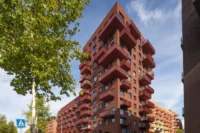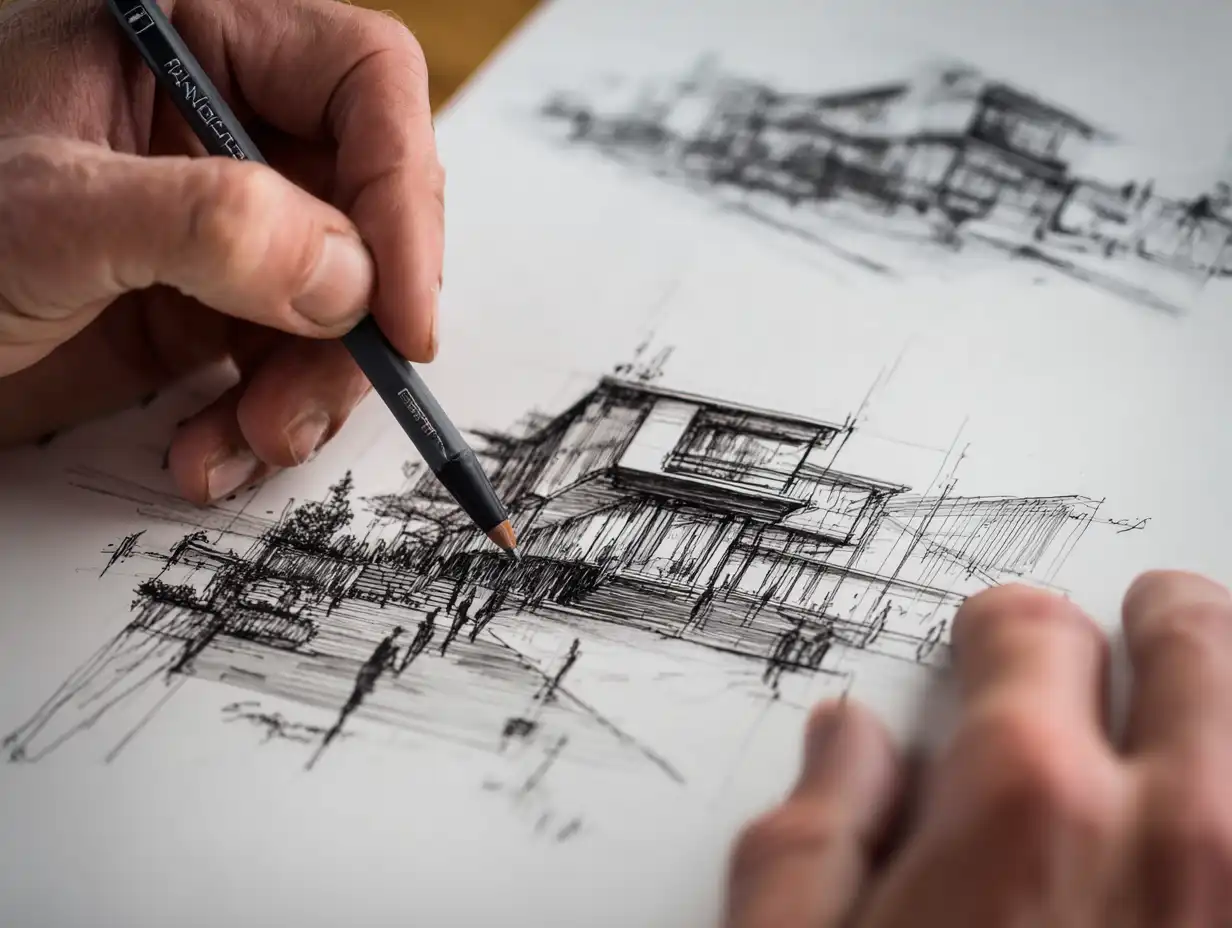Since 2017, Snøhetta has been transforming a former quarry outside Gothenburg into a sustainable, vibrant neighborhood known as Wendelstrand. What began as an ambitious vision to heal a scarred landscape and regenerate nature has blossomed into a thoughtfully planned garden city, blending diverse housing typologies with extensive green spaces, designed to welcome families of all kinds.
At the heart of Wendelstrand stands the Lakehouse—a dynamic communal building that embodies the project’s commitment to environmental sustainability, social connection, and innovative design. Completed before the sales launch of the 1,000 homes that will populate the development, the Lakehouse serves as a shared arena where residents can meet, work, relax, and engage in community life.

A New Model for Sustainable Living
Wendelstrand addresses a common urban challenge: how to avoid creating a lifeless commuter suburb disconnected from its residents’ everyday lives. Snøhetta’s answer was to build a large, multifunctional community hub first, setting a social and cultural foundation around which the neighborhood could organically grow. The Lakehouse includes office spaces, a fitness center, and dining venues, offering residents and visitors a variety of spaces to socialize, work, and unwind.
Nestled between forest, water, and open landscapes, Wendelstrand provides a rare blend of rural tranquility and urban convenience. Here, residents enjoy immediate access to nature—whether mushroom picking in the woods, forest walks, or early morning swims in Lake Landveer—while still being within easy reach of Gothenburg’s amenities.

Designing for Nature and Community
Sustainability lies at the core of the development’s philosophy. Wendelstrand promotes active, low-impact lifestyles through pedestrian- and bicycle-friendly pathways, integrated public transportation, and shared electric car services. Material choices and construction methods prioritize energy efficiency and environmental responsibility, reflecting a commitment to minimizing the development’s climate footprint.
The Lakehouse itself acts as a cultural and ecological bridge, connecting nature with modern community life. The elongated building rises like a spine through the site, creating fluid transitions between the natural terrain and built environment, as well as between public and private realms. The design celebrates the site’s quarry history and natural geology—both conceptually and materially.
Architecture Rooted in Place
The two lower floors of the Lakehouse are grounded in the quarry’s stone heritage. Concrete and stone flooring dominate these levels, anchoring the building physically and symbolically in the bedrock beneath. These solid materials provide a tactile connection to the earth and create a sense of permanence.
At the heart of the building is a soaring central atrium that stretches through all floors. This light-filled vertical space acts as a vibrant social nucleus—a venue for concerts, performances, casual gatherings, and private events. The atrium’s openness encourages interaction and draws natural daylight deep into the interior, reducing reliance on artificial lighting.
This communal spirit continues outside, where seating extends into an open-air amphitheater overlooking the lake. This seamless connection between indoor and outdoor spaces enhances the residents’ experience of nature and community, blurring boundaries to foster engagement.

A Sustainable Timber Crown
Drawing inspiration from the surrounding forest, the upper floors are constructed with glulam and laminated timber made from sustainably sourced Swedish and Norwegian pine and spruce. These natural materials form visible interior surfaces, bringing warmth and texture to the spaces while reducing the building’s carbon footprint.
Large glass panels wrap the upper structure, carefully patterned to filter sunlight and create a shimmering play of light reminiscent of sun filtering through treetops. These patterns also reduce solar heat gain, decreasing the need for energy-intensive sunshades and cooling systems.
The building’s rooftop further evokes the forest canopy. Covered in native plantings—including moss, heather, blueberries, grass, and wildflowers—this living roof helps slow water runoff, mitigates heat buildup, and enhances local biodiversity. The rooftop gardens, terraces, and walkways invite residents to connect with nature vertically, creating an appealing and functional outdoor space.
A Vision Realized
The Lakehouse at Wendelstrand represents a bold, holistic vision of what a modern, sustainable neighborhood can be—one where architecture, landscape, and community coalesce. Snøhetta’s thoughtful design fosters a sense of belonging and well-being, providing a place where people can live green, work efficiently, and connect meaningfully with each other and their environment.
As the surrounding homes rise, Wendelstrand promises to be a thriving garden city—an innovative blueprint for future developments worldwide striving to heal landscapes and nurture human connection through design.
Photography: Kalle Sanner
- Atrium communal space
- biophilic design in architecture
- Community hub architecture
- energy-efficient building design
- Glulam and laminated timber
- Innovative residential development
- Lakehouse Wendelstrand
- Living green roofs
- low carbon footprint buildings
- Mölnlycke garden city
- Multifunctional public building
- Natural material architecture
- Outdoor amphitheater design
- Quarry site redevelopment
- Snøhetta architecture
- Socially connected design
- Sustainable neighborhood design
- Sustainable timber construction
- Swedish sustainable architecture
- urban nature integration
























































Leave a comment